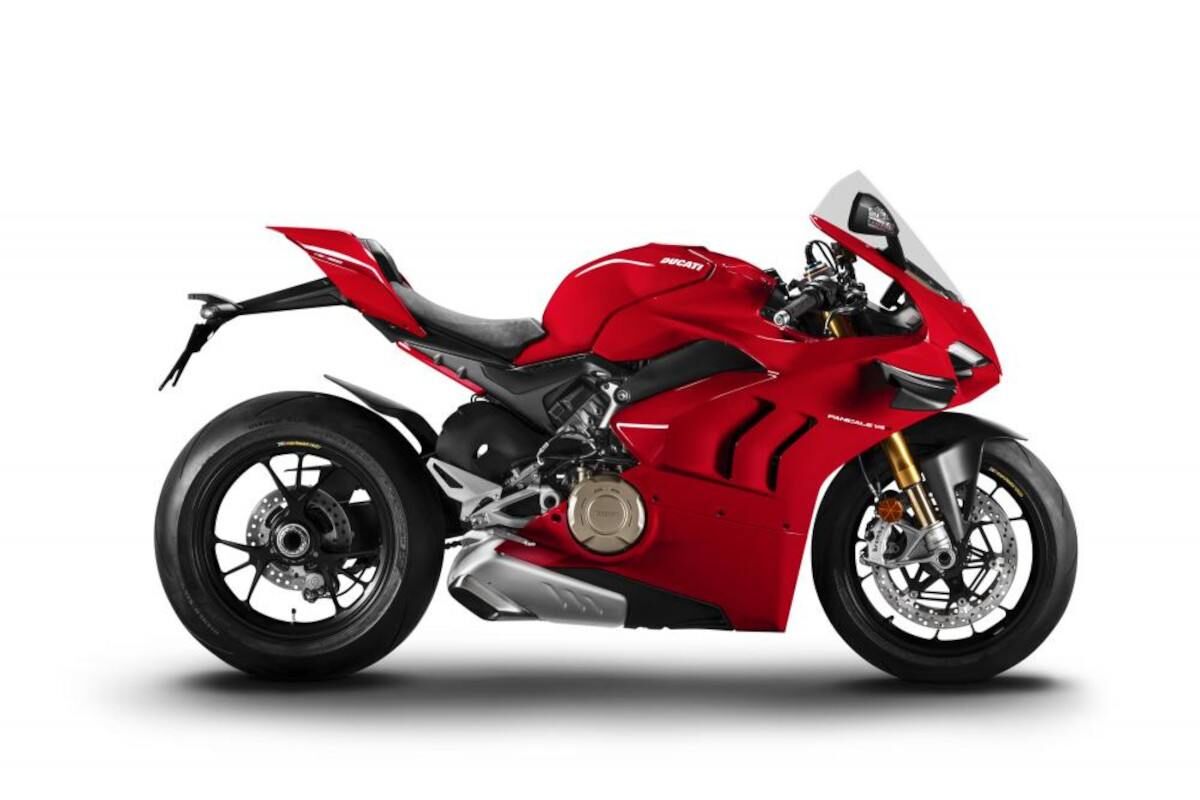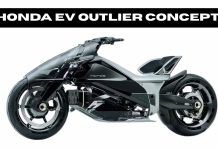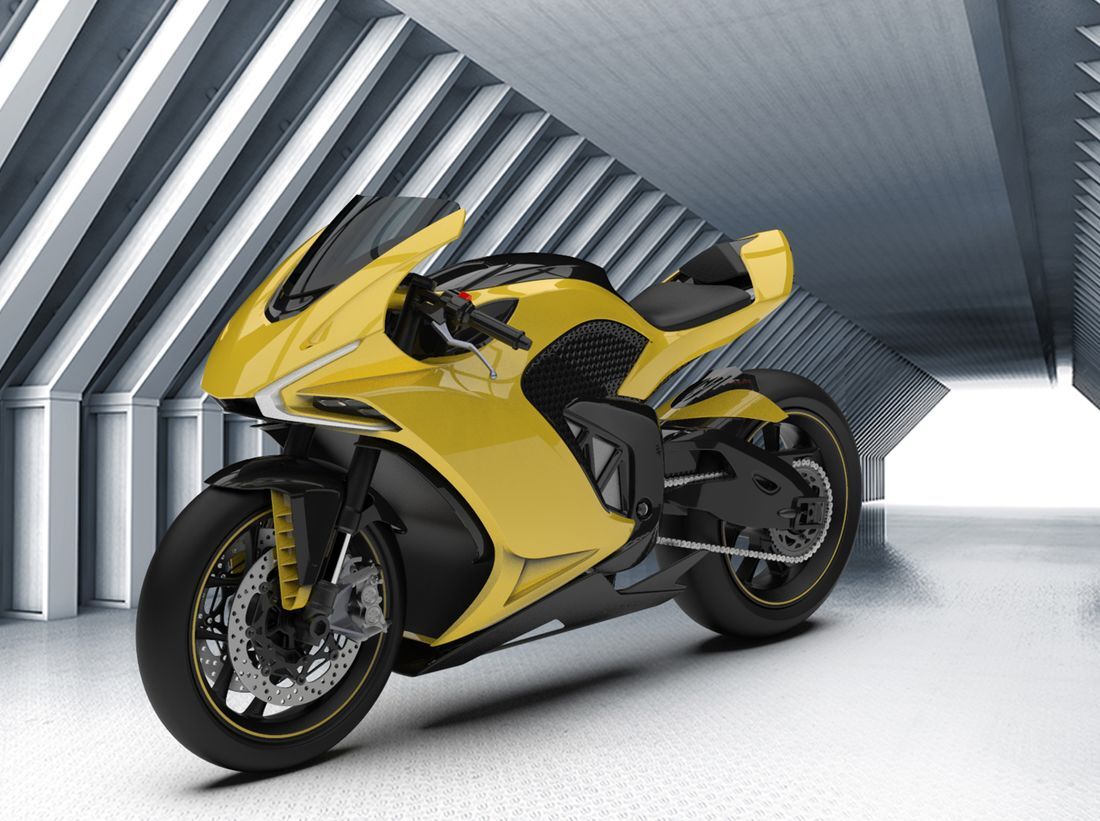Executive Summary
KTM, a prominent entity in the motorcycling industry, navigated a severe financial crisis in late 2024, culminating in a bankruptcy filing and a reported debt of approximately €3 billion. This precarious situation necessitated a court-supervised restructuring process, which included significant workforce reductions and production suspensions. Recent announcements regarding KTM’s H1 2025 performance, particularly statements from CEO Gottfried Neumeister and accompanying press releases, have projected a rapid recovery, highlighting “over 100,000 motorcycles sold” and “50,286 delivered to dealers.”
An in-depth analysis reveals a crucial distinction between motorcycles “sold to end customers” and units “delivered to dealers and importers.” While over 100,000 units were indeed sold to customers, only about half that number represented new deliveries to dealerships. This disparity strongly indicates that a substantial portion of the reported sales involved the clearance of existing, often older, inventory. Production from KTM’s Austrian facilities remains significantly constrained by persistent parts shortages and financial difficulties, with new deliveries largely sustained by Bajaj Auto’s manufacturing of small-displacement models in India. Despite claims of reduced inventory levels, a considerable backlog of unsold motorcycles, including models from 2023 and 2024, continues to occupy dealership floors, necessitating aggressive promotional strategies.
While Bajaj Auto’s €800 million capital infusion has provided a critical financial lifeline, enabling debt repayment and averting immediate collapse, KTM is far from achieving a comprehensive, sustainable recovery. The company continues to face deep-seated operational challenges, including the full reactivation of its supply chain, the imperative to rebuild trust with suppliers, and the ongoing management of a significant inventory overhang.
The optimistic narrative articulated by KTM’s leadership, while understandable for fostering market confidence, appears to understate the underlying complexities and the extensive journey required for a robust and lasting turnaround. Furthermore, the shift in majority ownership to Bajaj Auto signals a fundamental transformation in KTM’s strategic direction, particularly concerning production localization and future market focus.
1. Introduction: Navigating the Narrative of KTM’s Recovery
The past year has presented unprecedented challenges for KTM, a company long recognized as a powerhouse in motorcycle manufacturing. The period leading up to late 2024 was marked by aggressive, highly leveraged acquisition-driven growth, which proved unsustainable when consumer spending declined. This strategic misstep led to severe financial distress, pushing the company to the brink of collapse due to what have been described as “serious financial screwups” and “overconsumption” [User Query].
The culmination of this crisis was KTM’s declaration of bankruptcy in late November 2024, burdened by mounting debts reportedly totaling nearly US$3.09 billion (€3 billion). This forced the company into self-administration under Austrian insolvency laws, providing a temporary period of protection from its creditors.1 Against this backdrop of profound financial instability, recent H1 2025 headlines across motorcycle and powersports media, often echoing statements from KTM’s new CEO Gottfried Neumeister, have proclaimed a swift recovery. These reports highlight “more than 100,000 motorcycles sold this year globally” and suggest the company is “almost immediately on the right footing”.3
This report aims to critically dissect the official narrative surrounding KTM’s H1 2025 performance. It will move beyond superficial headlines to examine the underlying financial and operational realities. The analysis will rigorously evaluate the distinction between reported sales and actual deliveries, assess the current state of inventory, and analyze the origins of current production. By doing so, this report seeks to provide a nuanced, evidence-based understanding of KTM’s true recovery trajectory and its long-term prospects within the global motorcycle market.
2. The Preceding Crisis: A Deep Dive into KTM’s 2024 Financial Woes
KTM’s financial distress in 2024 was profound and multifaceted, primarily stemming from a strategy of “overproduction during a period of slowing demand.” This miscalculation resulted in a “stockpile of unsold motorcycles equivalent to a year of global sales,” creating a severe liquidity and inventory crisis across its network.1
Pierer Mobility AG, KTM’s parent company, reported consolidated revenues of €1,879 million in 2024, representing a substantial 29% decline from €2,661.2 million in 2023. The company’s operating results were deeply negative, with EBITDA at approximately €-481 million and EBIT at approximately €-1,184 million for 2024. These figures notably included significant value adjustments and impairments on intangible assets and goodwill, totaling around €-850 million, which underscored the severe devaluation of company assets.4 The financial leverage of the company escalated dramatically, with net debt surging to €1,643 million as of December 31, 2024, from €775.9 million in 2023. Consequently, equity turned negative, standing at €194 million, a clear indicator of severe financial instability.4
The crisis necessitated drastic operational measures. This included mass layoffs, resulting in a 14.1% reduction in the total workforce (from 6,184 employees in 2023 to 5,310 in 2024). The Austrian headcount was particularly affected, dropping by 18.3%.4 Production at KTM’s main Mattighofen factory was temporarily halted until the end of February 2025. This pause was a direct response to the urgent need to clear the backlog of unsold bikes, estimated at 130,000 units, many of which reportedly did not meet the new Euro 5+ emissions standards, posing a risk of obsolescence.1 As part of a broader restructuring effort aimed at generating liquidity and streamlining operations, KTM also divested non-core assets, notably selling its 50.1% stake in MV Agusta in February 2025, an investment it had only recently acquired.2
While Pierer Mobility AG’s financial report mentions a “restructuring gain of approximately €1.2 billion” that is expected to lead to positive EBIT in both the first half and full financial year of 2025, and restore equity to a positive figure 4, it is important to understand the nature of this gain. This substantial amount primarily represents an accounting gain derived from debt forgiveness, specifically 70% of the registered creditor claims.4
It is a one-time financial maneuver designed to clean up the balance sheet and provide a fresh financial start, rather than an indicator of improved operational profitability or robust market demand. The fact that the Pierer Mobility Group still “expects revenue for the 2025 financial year to be below the level of 2024” 4, despite this significant gain, further underscores that the core operational challenges, such as reduced operating performance due to production interruptions, continue to exert pressure. This suggests that the positive EBIT for 2025 is more of a financial engineering outcome, designed to stabilize the company’s financial structure, than a true operational turnaround driven by increased sales or efficiency.
The following table provides a clear, side-by-side comparison of KTM’s financial health across key periods, vividly illustrating the drastic decline in profitability and solvency from 2023 to 2024, and highlighting the projected figures for 2025. This visual contrast is crucial for understanding that the positive 2025 EBIT and restored equity are largely accounting effects of the restructuring gain, rather than organic operational improvements.
Table: Pierer Mobility AG: Key Financial Metrics (2023-2025 Outlook)
| Metric | Unit | 2023 | 2024 | 2025 Outlook (Projected) |
| Revenue | €m | 2,661.2 | 1,879.0 | Below 2024 level 4 |
| EBITDA | €m | 323.5 | -480.8 | Negative operating result, but significantly positive due to restructuring gain 4 |
| EBIT | €m | 160.0 | -1,184.2 | Significantly positive due to restructuring gain 4 |
| Result before taxes | €m | 92.1 | -1,276.6 | N/A |
| Result for financial year | €m | 76.4 | -1,079.9 | N/A |
| Balance sheet total | €m | 2,952.9 | 2,395.8 | N/A |
| Equity | €m | 909.3 | -193.7 | Positive, high triple-digit million range 4 |
| Net debt | €m | 775.9 | 1,642.7 | N/A |
| CAPEX | €m | 284.0 | 232.8 | N/A |
| Employees (as of Dec 31) | Headcount | 6,184 | 5,310 | Growing again 6 |
Note: 2025 outlook figures for profitability and equity are heavily influenced by the one-time restructuring gain, not necessarily by improved operational performance.
3. Bajaj Auto’s Strategic Intervention and Shifting Control
Bajaj Auto, a prominent Indian motorcycle manufacturer, has maintained a long-standing strategic partnership with KTM, a relationship that dates back to 2007 when Bajaj initially acquired a 14.5% stake. Over the years, Bajaj progressively increased its shareholding in Pierer Bajaj AG (PBAG), the holding entity of Pierer Mobility AG, eventually reaching 49.9%.8
In a decisive move to rescue KTM from its severe financial crisis, Bajaj Auto, through its Netherlands-based subsidiary Bajaj Auto International Holdings BV (BAIH), acquired full control of PBAG via an €800 million debt deal. This substantial investment included a fresh infusion of €600 million, in addition to €200 million already invested since FY2024.8 The primary and most immediate purpose of this significant fund infusion was to enable KTM to meet its critical financial obligations, specifically to pay off its creditors. This involved depositing €548 million by a crucial May 23, 2025, deadline, a payment essential to avoid liquidation and ensure the continuity of KTM’s business operations.8 To facilitate this massive acquisition and debt repayment, Bajaj secured €566 million in unsecured loans from a consortium of major international banks, including JP Morgan Chase, DBS Bank, and Citigroup Global Markets Asia Ltd. This fundraising was explicitly earmarked for investment activities, despite Bajaj reporting a surplus of ₹15,000 crore (approximately €160 million) on its balance sheet at the end of the October-December 2024 period.8
With the acquisition of 100% of PBAG, Bajaj’s indirect control of KTM (via Pierer Mobility AG) dramatically increased from 37% to 75%. This effectively transformed Bajaj’s role “from hitherto being a dormant minority investor to a majority owner in the global KTM company”.8 This strategic acquisition is considered a “critical step in realigning governance and rebuilding the KTM business,” explicitly opening the door for “deeper restructuring and future partnerships.” Upon completion of regulatory approvals, the Pierer Group will exit PBAG, granting Bajaj full operational and strategic control over KTM, Husqvarna, and GASGAS brands.9
Bajaj’s acquisition of a controlling stake in KTM is more than just a rescue operation; it represents a profound strategic power play designed to consolidate its position as a global player in the premium motorcycle segment. By securing a 75% stake, Bajaj gains direct control over KTM’s advanced technology, intellectual property, and established global distribution network, extending beyond its previous role of manufacturing small-displacement models. This strategic move positions Bajaj to leverage KTM’s engineering expertise and prestigious brand image to compete more aggressively in the global premium market. The stated ambition to manufacture higher-displacement (>390cc) KTM bikes in India 10 strongly suggests a long-term strategic realignment, where more production, potentially even for larger bikes, will shift to India for cost efficiencies and enhanced market access. Consequently, KTM’s Austrian operations may increasingly focus on high-end research and development, design, and niche, low-volume production, while mass production gravitates towards Bajaj’s facilities.
Bajaj’s decision to undertake substantial unsecured loans despite possessing a considerable cash surplus indicates a remarkably aggressive risk appetite and a strong conviction in the long-term value and turnaround potential of KTM. This is not a cautious, incremental investment; it is a decisive move to consolidate power and accelerate their global market ambitions. It suggests Bajaj views KTM not just as a troubled asset to be salvaged, but as a crucial platform for their future growth in the high-performance and premium motorcycle markets. This strategic imperative is so significant that Bajaj is willing to incur additional debt and potentially face near-term pressure on its consolidated financials to secure this pivotal asset and reshape the global motorcycle landscape.
4. Deconstructing H1 2025 Sales and Deliveries: A Closer Look
KTM’s H1 2025 press releases have prominently reported that “more than 100,000 motorcycles were sold to end customers worldwide,” with the precise figure being 100,391 units. Simultaneously, the company stated that only “50,286 units [were] delivered to dealers and importers” during the same period.6 It is important to note that these reported figures encompass sales and deliveries of all brands under the Pierer Mobility Group, including KTM, Husqvarna, and GASGAS.7
The distinction between “delivered” and “sold” is critical for understanding the true state of KTM’s market performance. “Delivered” signifies that units have left the factory and arrived at dealerships, thereby becoming part of the dealer’s inventory. In contrast, “sold to end customers” means the motorcycles have been purchased by the final consumers.11 The substantial discrepancy between the two figures (100,391 sold to customers versus 50,286 delivered to dealers) strongly implies that approximately 50,105 motorcycles sold to end customers in H1 2025 were drawn from
existing dealer inventory rather than from new factory shipments. This means that a significant portion of the reported “sales” were effectively a reduction of the existing backlog.6 KTM itself implicitly confirms this strategy, stating in its press releases that “Due to the positive sales figures in the first six months, KTM was able to significantly reduce inventory levels”.6 This indicates that a primary objective of the sales push was indeed inventory clearance.
To provide crucial context, the H1 2025 sales figure of 100,391 motorcycles is “significantly down” when compared to previous periods. In H1 2024, KTM sold 147,496 motorcycles, which was already an “alarming drop” from the 187,158 motorcycles sold in H1 2023.7 This comparison reveals that despite the positive spin, KTM’s sales volume to end customers in H1 2025 is still substantially lower than pre-crisis levels and even below the already concerning figures from H1 2024. This trend indicates that while inventory is being cleared, the overall market demand for KTM Group products has not fully rebounded to historical levels.
The headline figure of “100,000 motorcycles sold” in H1 2025, while presented as a sign of robust performance, primarily represents a successful inventory clearance effort rather than a strong rebound in new production and organic market demand. The company is effectively liquidating its substantial backlog of unsold units that had “languished on dealership lots” [User Query]. This is a necessary and positive step for improving cash flow and freeing up dealer floor space, but it is not indicative of a full operational recovery or a return to pre-crisis production volumes. The large gap between units sold to customers and units delivered to dealers clearly shows that the company is still working through its accumulated stock, implying that the actual demand for newly manufactured KTM motorcycles is still significantly subdued.
The aggressive push to sell existing inventory, even if it means drawing heavily from older stock, is critical not just for immediate cash flow but also to clear out models that may soon become unsellable or less desirable due to evolving emissions standards, such as Euro 5+.1 This adds a layer of urgency to the inventory clearance strategy, suggesting that the reported “sales” figures are partly a result of deep discounting and promotional efforts, as evidenced by low APR financing and cash incentives 14, designed to offload depreciating assets, rather than purely organic demand for current model year products. This implies that the profitability per unit on these “cleared” sales might be lower than typical.
The following table directly quantifies the critical gap between the number of motorcycles “sold to end customers” and those “delivered to dealers,” providing concrete evidence for the analysis. By including data from previous periods, the table reveals the declining trend in both sales and deliveries over time, which is vital for preventing a misleading interpretation of the current performance.
Table: KTM Group Motorcycle Sales and Deliveries (H1 2023-2025)
| Period | Motorcycles Sold to End Customers (Units) | Motorcycles Delivered to Dealers (Units) | Difference (Sold – Delivered) | Source |
| H1 2023 | 187,158 | N/A | N/A | 7 |
| H1 2024 | 147,496 | N/A | N/A | 7 |
| H1 2025 | 100,391 | 50,286 | 50,105 | 6 |
5. Inventory Backlog and Production Realities: Mattighofen vs. Bajaj
Despite KTM’s public statements about “significantly reduc[ing] inventory levels” 6, the observation that “there are still another 150,000 motorcycles sitting on lots,” some “probably even from 2023” [User Query], points to a persistent and substantial inventory overhang. This aligns with earlier reports that indicated a “stockpile of unsold motorcycles equivalent to a year of global sales” and approximately 250,000 units of backlog, with around 130,000 units specifically in stock at the end of 2024.1 Direct observations from dealerships, as noted in the user query and corroborated by online inventory checks 14, confirm the continued presence of 2023 and 2024 model year motorcycles on showroom floors. This indicates that the inventory challenge is not limited to recently produced units but includes older stock that has been difficult to move. The aggressive promotional offers currently in effect, such as low APR financing (as low as 2.99%), significant cash incentives (up to $2,250 in PowerWear/Parts), and attractive monthly payments on various 2024 and 2025 models 14, further underscore the ongoing pressure on KTM and its dealer network to liquidate existing stock, irrespective of the model year.
KTM’s primary Austrian production facilities in Mattighofen have experienced severe and recurring disruptions. Production was initially halted until the end of February 2025 as part of the restructuring efforts.1 Following a “bumpy restart” in March, the Mattighofen plant managed to assemble “only about 4,200 motorcycles,” utilizing “whatever parts inventory was left on hand.” This limited output highlights the severe constraints on Austrian production.17 Crucially, KTM was forced to “once again shut down its production lines, this time until at least the end of July” (as of an April 28, 2025, report). The official reason cited was a “lack of parts,” but more specifically, “not enough cash to pay for parts.” This indicates that despite the restructuring plan, liquidity issues with suppliers persisted, making them “reluctant to continue shipments” after partial repayment deals.15 Compounding these issues, some critical parts needed for production have extensive delivery times, exceeding 20 weeks, which severely hampers any rapid ramp-up of manufacturing.17
The inference that the 50,286 new motorcycles delivered to dealers are “likely the 390s that Bajaj was already producing, not those out of Mattighofen” [User Query] is strongly supported by the available information. Multiple sources confirm that KTM’s H1 2025 sales results were “mainly achieved through the sales of its 390 and smaller models, which are produced in India by KTM’s soon-to-be majority owner Bajaj.” Significantly, production of these small-displacement models “continued without any issues during KTM’s financial struggles,” providing a stable supply channel.7 Bajaj’s initial €200 million investment was instrumental in helping “kickstart KTM’s manufacturing lines in Asia in March,” further solidifying the role of Indian production in maintaining market presence.18 Looking ahead, Bajaj Auto is actively “stepping into the premium two-wheeler segment by aspiring to manufacture higher displacement (above 390cc) KTM bikes for the domestic and global markets.” This strategic ambition suggests a long-term shift where Bajaj’s manufacturing capabilities will increasingly support KTM’s product portfolio across various displacement categories.10
KTM’s “recovery” is currently a dual-track process heavily skewed towards Bajaj’s Indian operations. While the Austrian factory is attempting to restart, its output remains minimal and inconsistent due to deep-seated supply chain and liquidity issues, as evidenced by recurring production halts and part shortages. The reported “deliveries” of new motorcycles in H1 2025 are almost entirely attributable to Bajaj’s uninterrupted production of smaller, higher-volume models. This creates a critical dependency, where KTM’s ability to supply new inventory to the global market is largely outside its traditional Austrian manufacturing base. This raises significant questions about the long-term viability and strategic importance of Mattighofen for volume production, particularly for larger displacement models, and suggests a potential shift in the brand’s production identity.
The current production realities at Mattighofen, characterized by chronic parts shortages and limited output, combined with Bajaj’s increased controlling stake and its stated ambition to produce larger displacement KTMs in India, strongly suggest a fundamental and potentially permanent shift in KTM’s global manufacturing strategy. Despite official reassurances that the Austrian plant will remain crucial 19, the economic realities of high labor rates and regulatory costs in the EU make large-scale, high-volume production of bigger bikes in Austria increasingly unsustainable.19 It is highly probable that the Mattighofen facility will transition primarily into a research and development, design, and potentially niche, low-volume, high-end production center, while the bulk of future production, even for mid-to-large displacement models, will gravitate towards India. This implies a significant long-term downsizing of traditional Austrian manufacturing jobs and a redefinition of KTM’s “Made in Austria” identity for its volume products.
6. KTM’s Path Forward: Challenges, Opportunities, and Brand Perception
CEO Gottfried Neumeister’s public statements are consistently optimistic, projecting a narrative of rapid recovery. He emphasizes a “powerful start in 2025,” “strong global performance,” and the company being “back on the right track,” attributing this to “unbroken” community support and a renewed focus on “customer satisfaction, innovation, and quality”.3 To reinforce this positive outlook, KTM is actively promoting initiatives such as “intensifying its recruitment efforts” and “actively seeking qualified specialists and managers” both in Austria and internationally.6 Furthermore, the company is highlighting customer engagement programs like “Orange Blood” and the “Orange Board” (a 15-member customer panel providing direct feedback), alongside the establishment of a “Dealer Excellence Center” to strengthen its global dealer network.6 Stefan Pierer, the former CEO, framed the entire crisis as a necessary “pit stop for the future,” emphasizing the commitment to fight for the KTM brand.20
Despite KTM’s claims of “successfully reactivat[ing] its entire supply chain” 6, the operational reality on the ground in April 2025 presented a stark contradiction. The Mattighofen factory experienced another production halt, specifically due to “critical parts shortages” and the inability to pay for them. Suppliers, understandably cautious after KTM’s partial repayment deal, were “reluctant to continue shipments”.15 This directly refutes the public statements regarding supply chain stability. The “enormous backlog of unsold motorcycles,” estimated at 250,000 units 15, has severely “clogged dealerships, slowed cash flow, and discouraged new manufacturing efforts.” Dealers themselves are described as being “left in limbo,” facing “delayed deliveries, uncertain parts availability, and questions about long-term support” from the manufacturer.15 The task of regaining trust from a wary network of suppliers, a financially strained dealer network, and ultimately, a potentially hesitant consumer base, will be a “monumental task” that extends far beyond the immediate financial rescue.15
There is a significant and concerning disconnect between KTM’s public relations narrative and its operational realities, particularly concerning its Austrian manufacturing base. While the CEO’s statements are undoubtedly aimed at restoring market confidence and boosting employee morale, the persistent and fundamental issues with supply chain stability and production capacity at Mattighofen suggest that the company is still grappling with deep-seated operational challenges. This discrepancy, if not transparently addressed, could ultimately erode trust among key stakeholders—including dealers, suppliers, and sophisticated customers—who may experience a different, more challenging reality than the one being publicly portrayed. The “reactivated supply chain” claim might be largely true for Bajaj’s production lines, but critically misleading for Mattighofen.
Beyond the immediate financial crisis, KTM faces long-standing challenges related to its brand perception. The company has received “constant complaints regarding mechanical breakdowns,” particularly concerning camshafts in their LC8c parallel-twin engines (used in popular models like the 790 Duke and 890 Adventure), and issues with electrical systems. This contrasts sharply with the “rock-solid dependability of Japanese rivals” like Yamaha and Suzuki, whose bikes are often built with simplicity and longevity in mind.21 KTM’s “premium approach” and associated pricing structure also present difficulties in a market grappling with “changing rider demographics and inflation.” Many younger riders, a key demographic for motorcycles, are struggling financially and may find KTM’s higher price points prohibitive.21 Furthermore, the controversial policy of “unlockable characteristics”—where certain features like quick shifters and ride modes are pre-installed but require an additional payment to activate—has “irritate[d] some customers.” This practice can make riders feel “nickel-and-dimed” for hardware already present on their bikes, potentially eroding customer loyalty and trust.21
The financial crisis has exacerbated existing concerns about product reliability and perceived customer value, potentially alienating a segment of its loyal customer base who might now “hesitate” to purchase due to uncertainty or past negative experiences. The “unlockable features” policy, while potentially a short-term revenue stream, risks fostering long-term resentment among riders who feel overcharged for functionality already built into their bikes. Without a concerted effort to address these fundamental product quality and customer experience issues, even with Bajaj’s significant financial backing, KTM may struggle to regain its “titan” status and market share against more reliable and customer-centric competitors in the long run. The “Ready to Race” motto might lose its resonance if reliability and value for money are consistently questioned.
KTM’s management “expects its own inventories and those of dealers and importers to normalize by the end of 2025”.4 This is an ambitious target, given the current substantial backlog and the persistent production interruptions at Mattighofen. Achieving this will likely require continued aggressive promotional strategies and a significant ramp-up of consistent production, primarily from Bajaj’s facilities. KTM’s involvement in MotoGP, a key aspect of its “Ready to Race” brand identity, is confirmed only until the end of 2026 due to existing contracts. However, CEO Neumeister has stated that participation beyond 2026 depends on whether they “can afford it,” indicating ongoing financial caution regarding high-cost racing activities.22 This uncertainty is further underscored by initial court hearings that had even laid out a “planned withdrawal” from MotoGP as part of cost-saving measures during the crisis.24
7. Conclusion: Is KTM Truly “Out of the Woods”?
Based on a comprehensive analysis of the available data, KTM is not yet “out of the woods” in the holistic sense that the optimistic headlines and CEO statements might suggest. While the immediate and existential threat of bankruptcy has been successfully averted through Bajaj Auto’s substantial €800 million capital infusion and the court-approved restructuring plan 8, the company is navigating a complex and protracted path toward true, sustainable recovery. The reported H1 2025 sales figures, while seemingly robust in isolation, are primarily a reflection of aggressive inventory clearance 6 rather than a robust rebound in new production or organic demand for its full product range.
The critical distinction between 100,391 motorcycles “sold to end customers” and only 50,286 “delivered to dealers and importers” 6 is paramount. This significant discrepancy unequivocally highlights that approximately half of the reported sales volume was drawn from the substantial backlog of existing inventory at dealerships, including older model years from 2023 and 2024.1 While this inventory reduction is a necessary and positive step for improving cash flow and freeing up dealer floor space, it does not signify a full return to healthy, high-volume manufacturing from its primary Austrian facilities, nor does it indicate a surge in new market demand.
KTM’s Austrian production at Mattighofen remains severely constrained by persistent parts shortages and liquidity issues, with documented output limited to a mere ~4,200 units during a brief restart period.15 The continuity of new motorcycle deliveries to the global market largely relies on Bajaj’s Indian manufacturing of smaller displacement models, which continued uninterrupted during KTM’s crisis.7 This growing dependency, coupled with Bajaj’s increased controlling ownership and its strategic ambitions to produce higher-displacement KTMs in India 8, strongly points to a significant and potentially permanent long-term shift in KTM’s global manufacturing footprint. The Austrian plant may increasingly evolve into a research and development and niche production hub rather than a primary volume manufacturing facility.19
Furthermore, the company faces formidable ongoing operational challenges. These include fully reactivating a disrupted supply chain for all model lines, rebuilding trust with wary suppliers and a financially impacted dealer network, and addressing long-standing brand perception issues related to product reliability (e.g., LC8c engine and electrical system complaints) and controversial business practices (e.g., “unlockable features”).21 The optimistic outlook from CEO Neumeister, while strategically necessary for market confidence and employee morale, currently masks these deep-seated operational and brand challenges.
In conclusion, while Bajaj’s decisive intervention has undoubtedly pulled KTM back from the brink of financial collapse, the company is still navigating a challenging and complex path towards sustainable profitability and a comprehensive operational recovery. Investors, dealers, and customers should exercise continued caution, recognizing that the current “recovery” is a multi-faceted process with significant hurdles remaining. The true measure of KTM’s long-term success will be seen in its ability to achieve sustained, profitable new production from all facilities, a genuinely normalized inventory across its dealer network, and a fully restored brand reputation, rather than just accounting gains from debt forgiveness and the tactical clearance of existing inventory.
Sources
- The Financial Challenges Facing KTM – Power Systems Research, accessed on July 13, 2025, https://www.powersys.com/2025/01/racing-against-bankruptcy-the-financial-challenges-facing-ktm/
- KTM – Wikipedia, accessed on July 13, 2025, https://en.wikipedia.org/wiki/KTM
- KTM Powers Into 2025 With Strong Global Performance | WebWire, accessed on July 13, 2025, https://www.webwire.com/ViewPressRel.asp?aId=340880
- Annual Results PIERER Mobility AG: Key financial figures for …, accessed on July 13, 2025, https://www.pierermobility.com/en/newsroom/eqsfeed/2995290?type=adhoc
- Industry update: Major manufacturers mostly report sluggish 2024 sales – RevZilla, accessed on July 13, 2025, https://www.revzilla.com/common-tread/industry-update
- KTM reports: over 100K motorcycles sold in first half of 2025 – MotoPinas.com, accessed on July 13, 2025, https://www.motopinas.com/motorcycle-news/ktm-reports-over-100k-motorcycles-sold-in-first-half-of-2025.html
- KTM Reports Sales of 100000 Motorcycles in First Half of 2025, accessed on July 13, 2025, https://www.motorcycle.com/bikes/news/ktm-reports-sales-of-100-000-motorcycles-in-first-half-of-2025-44644651
- Bajaj sharpens international play as it takes full control of Austrian …, accessed on July 13, 2025, https://www.livemint.com/companies/news/bajaj-auto-ktm-motorcycles-austria-pierer-mobility-debt-deal-automobiles-chakan-plant-11747920068469.html
- Bajaj Auto to Fully Acquire Pierer Bajaj AG for ₹491.3 Cr via …, accessed on July 13, 2025, https://hdfcsky.com/news/bajaj-auto-to-fully-acquire-pierer-bajaj-ag-for-rs-491-3-cr-via-european-subsidiary
- Motorcycle Market Size, Share, Value | Growth Report [2032] – Fortune Business Insights, accessed on July 13, 2025, https://www.fortunebusinessinsights.com/motorcycle-market-105164
- KTM Sold 100,000 Motorcycles This Year, But Most Are Probably Old Bikes – RideApart.com, accessed on July 13, 2025, https://www.rideapart.com/news/765591/ktm-100000-motorcycles-sold-half-were-old-bikes/
- KTM report over 100,000 motorcycles sold in 2025 – Enduro21, accessed on July 13, 2025, https://enduro21.com/en/videos/event-highlights/ktm-report-over-100-000-motorcycles-sold-in-2025?filter_tag[0]=28
- KTM report over 100,000 motorcycles sold in 2025 – Enduro21, accessed on July 13, 2025, https://enduro21.com/en/videos/event-highlights/ktm-report-over-100-000-motorcycles-sold-in-2025
- KTM KTM – July 2025 Power Deals Promotion Details | Available at Wheelsports Inc., accessed on July 13, 2025, https://www.ktmwheelsports.com/Promotion-Details-d54eb8db-226e-4ea9-9c74-afdb006dcb64
- KTM Faces Another Production Halt Amid Financial Turmoil – What It Means for Riders in 2025 – KiWAV motors, accessed on July 13, 2025, https://kiwavmotors.com/en/blog/ktm-faces-another-production-halt-amid-financial-turmoil-what-it-means-for-riders-in-2025
- KTM Motorcycles, accessed on July 13, 2025, https://www.ktmworld.com/inventory/lines/motorcycle/ktm
- KTM Forced To Halt Production Once Again – ADV Pulse, accessed on July 13, 2025, https://www.advpulse.com/adv-news/ktm-forced-to-halt-production-once-again/
- KTM back from brink and looking to bright future – Orwell Motorcycles, accessed on July 13, 2025, https://orwell.co.uk/news/ktm-back-from-brink-and-looking-to-bright-future
- KTM Saga: Bajaj Makes Its Move – Moto Gold UK, accessed on July 13, 2025, https://motogold.uk/2025/05/23/ktm-saga-bajaj-makes-its-move/
- KTM ANNOUNCES STRATEGIC RESTRUCTURING PLAN – KTM Sportmotorcycle GmbH, accessed on July 13, 2025, https://press.ktm.com/news-ktm-announces-strategic-restructuring-plan?id=209392&menueid=5678&l=germany
- Financial Crisis KTM: What Went Wrong and What’s Next? – KiWAV motors, accessed on July 13, 2025, https://kiwavmotors.com/en/blog/financial-crisis-ktm-what-went-wrong-and-whats-next
- www.motorsport.com, accessed on July 13, 2025, https://www.motorsport.com/motogp/news/ktm-will-continue-with-motogp-in-2027-if-we-can-afford-it-says-ceo/10728004/#:~:text=KTM%20CEO%20Gottfried%20Neumeister%20has,what%20happens%20thereafter%20remains%20uncertain.
- KTM will continue with MotoGP in 2027 “if we can afford it”, says CEO – Motorsport.com, accessed on July 13, 2025, https://www.motorsport.com/motogp/news/ktm-will-continue-with-motogp-in-2027-if-we-can-afford-it-says-ceo/10728004/
- KTM makes positive announcement after money worry | Crash.net, accessed on July 13, 2025, https://www.crash.net/motogp/news/1070758/1/ktm-makes-positive-announcement-future
Our Social Media Handles
- Instagram : LivingWithGravity
- Medium : Akash Dolas
- YouTube Channel : Gear and Shutter


































